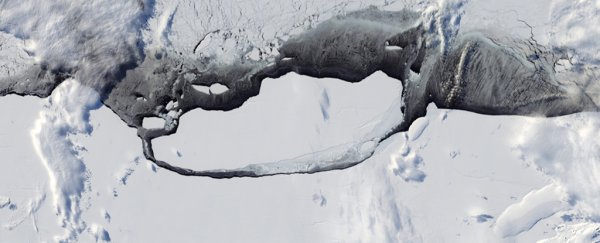In July, a huge crack in Antarctica's Larsen C ice shelf calved the third-largest iceberg in recorded history.
The scale of the giant ice block, dubbed A-68, is truly awesome: roughly the area of Delaware, the mass of 5.6 Mount Everests, and voluminous enough to fill Lake Erie more than twice.
Adrian Luckman, a glaciologist at Swansea University, has used a polar satellite called Sentinel-1 along with other Antarctic researchers to keep an eye on the iceberg since before its birth.
On Wednesday, Luckman posted an animation to Twitter that compressed nine months-worth of satellite images into a few seconds. "Bon voyage A68," Luckman said in his tweet.
We've slowed down that animation down to 10 seconds to show the iceberg's birth and evolution:
In the first half of the animation, from March through early July, you can see the large rift develop from south to north. Then, in mid-July, the huge iceberg breaks free from its ice shelf.
The rest of the clip shows A-68 floating into the Weddell Sea, bumping back into the ice shelf, and slowing working its way north through December.
The fate of A-68 could take a long time to play out. Though it's already losing big chunks, it may lurk in the open ocean for years.
It will ultimately melt into sea water, which will evaporate and make its way into clouds, rain, snow, more icebergs, and living beings.
This article was originally published by Business Insider.
More from Business Insider:
